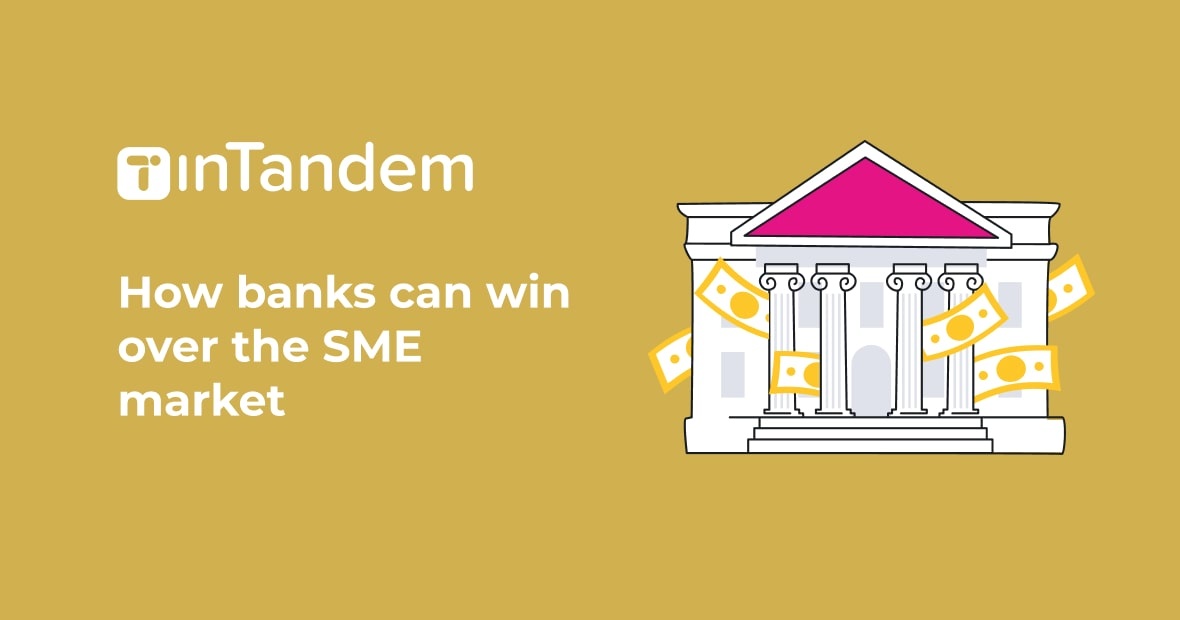In part one of this series, we identified and discussed some of the most pressing challenges small businesses have experienced during COVID-19. In part two, we will focus on how banks can overcome these challenges and lead with value such as technology, education and support. From getting access to relevant and timely information on COVID to enabling them to run their business more digitally, small businesses can count on banks for more than just money.
So where do banks fit into this story? As a result of the pandemic, banks have been addressing the cash flow issues of small businesses by offering bridge loans or forgiveness loans, such as the Paycheck Protection Program (PPP) in the U.S. According to the American Banker, this program might be extended as a result of recent protests in the U.S. that affected small businesses in terms of collateral damage and disruption of services. Whereas financing has been the main focus of banks recently, they can also deliver value to their small business clients beyond lending. They can become strategic advisors to empower their small business clients with value-added service to meet their needs during times of turmoil and beyond. More than ever, small business owners are seeking sources of inspiration, advice, and tools to help them survive and thrive.
A consumer intelligence and insights report released by Resonate explained how banking customers want more personalized services and technologies. Therefore, banks constantly need to reinvent themselves to stay on top of the game. Leading with innovation is a key strategy to keep banks afloat, and their customers close. They can supplement their financial expertise with technology and tips that will also add value to the small businesses’ core business.
COVID-19 is acting as an accelerator for digital transformation and quickly impacting what banks are delivering their SME clients and how they are delivering it. So, how can banks address the new normal of small businesses?
Provide access to information
Navigating the sea of information around COVID and support programs is no easy challenge for small business owners that are currently trying to keep their business afloat. Making relevant information, such as financial relief and fee waiver options accessible — on the bank website and through direct communication channels — should be a first step. By why stop there? SMEs are struggling to find the right financial support but also have other, immediate needs, which can mean make or break for a small business owner.
Banks can make educational materials accessible to small business owners, addressing the most pressing pain points they currently face, such as keeping their clients close remotely, contactless payments and moving services online, whilst enabling technology that lets them do so. They will not only become a single source of information for small businesses, but also be a key player in helping small businesses survive, beyond lending.
Enable digital transformation
Apart from enhancing the mobile banking and mobile app experience for small business clients, banks can use this time to help small business owners move online. Supporting SMEs in the areas they currently need most, which will set them up for success the day after the pandemic, can create long-lasting client relationships. This period is an opportunity for banks to offer customer-centric digital solutions to help them with their day-to-day business activities. Partnering with third-party vendors can combine technology experience with financial savviness to optimize personalization, significance, and continuous engagement in the banks’ offerings. Digital transformation allows small businesses to more easily and effectively measure their marketing and sales, onboarding and retention of customers. Operating more digitally, especially in these times, can also help banks and small businesses increase their customers’ experience and keep up with their competition. With COVID-19 acting as an accelerator for digital transformation, offering services digitally has become existential overnight and is more urgent than ever.
Strengthen the communication channel
Digitalization of small businesses means more than controlling finances—it’s also about automating processes to free more time for business owners and their staff to stay engaged with their clients. Strengthening communication channels and being available as well as approachable right now is crucial. Banks can update their customers about how to comply with health or legal regulations or send other useful tips about issues that are not related to finances. If banks are changing their hours or offering online consultations instead of in-person meetings, their small business customers should be alerted. Similarly, these small business clients can implement the same time of communication to their own customers. Enlisting community support in emergency situations or ongoing support in the form of inspirational messages or practical offers of education or digital training can assist small businesses on their road to recovery. For those small businesses in less dire distress, banks can use the opportunity to instigate new technology tips or trends in online business operations. By supporting small businesses with the basics, banks can build confidence by teaching their customers to walk before they run.
Establish trust
Brand loyalty is not to be taken for granted ‒‒especially not in times like these. The experience small business owners have with their banks today will shape their relationship tomorrow. As far back as 2016, bank customers already showed signs of being fickle. A J.D. Power U.S. Small Business Banking Satisfaction Study showed that 22% of fast-growing small businesses switched banks within the past 12 months, compared with only 5% of other small businesses. That’s why it’s important for banks to take their time to know their customers and personalize their messages and establish trust. A personalized approach will ensure small business owners that you are aiming to offer something that will benefit them, and not just the bank. Both consumers and businesses expect to receive added personalized offers from their bank that add value to their daily lives.
Want to learn more about how banks can provide value to their small business customers? Schedule a demo with vcita here.


























